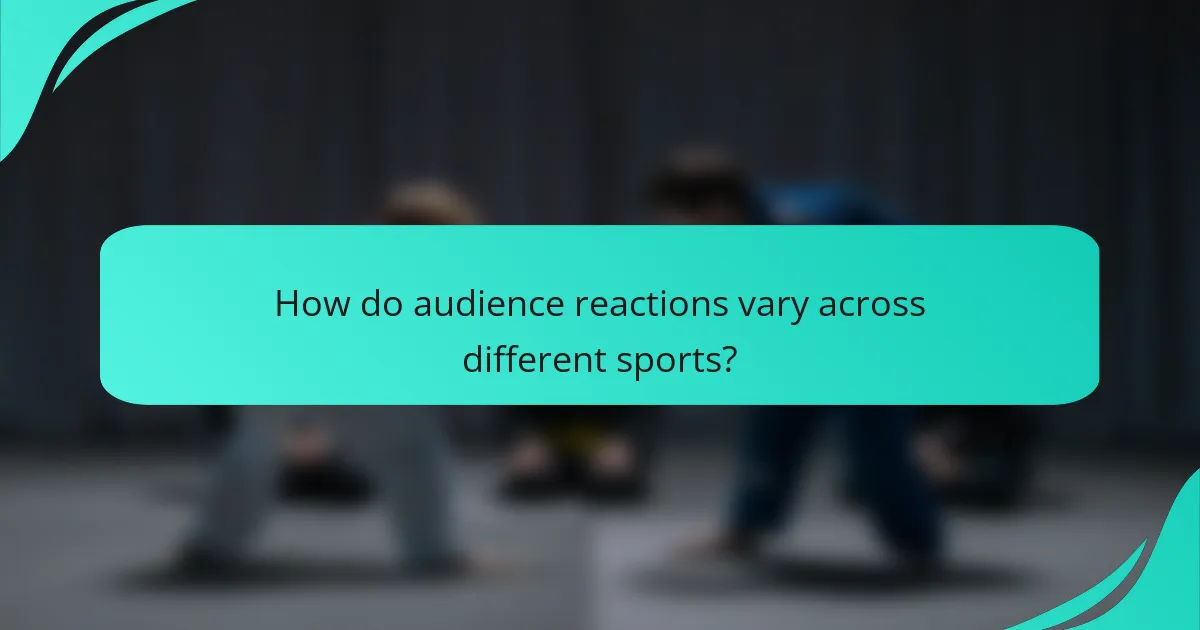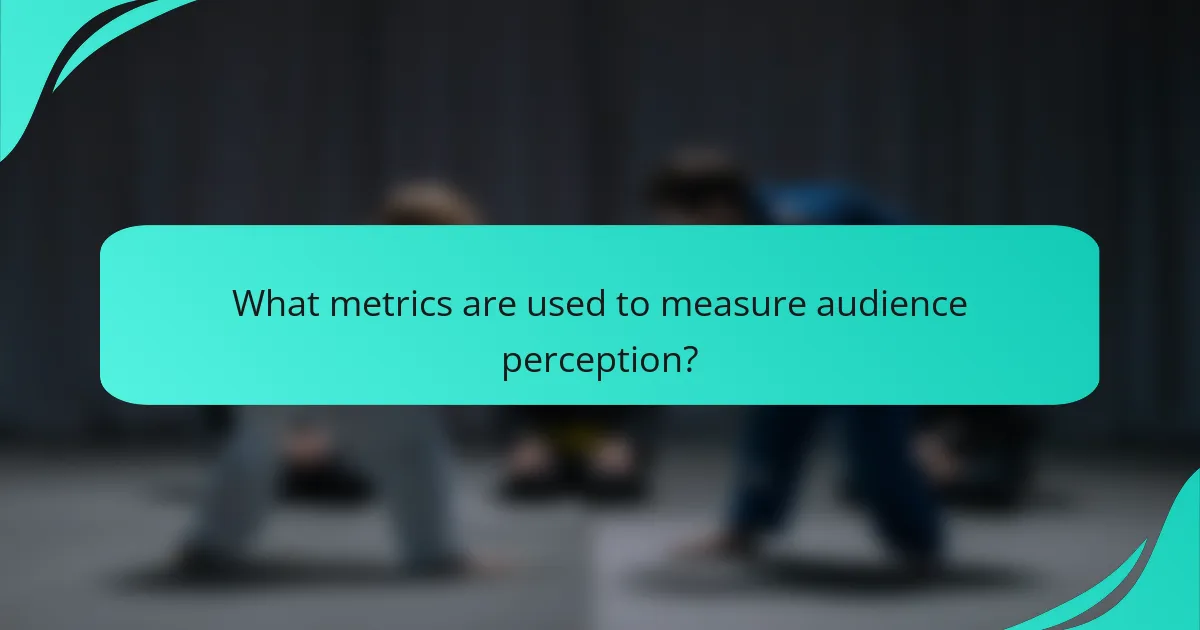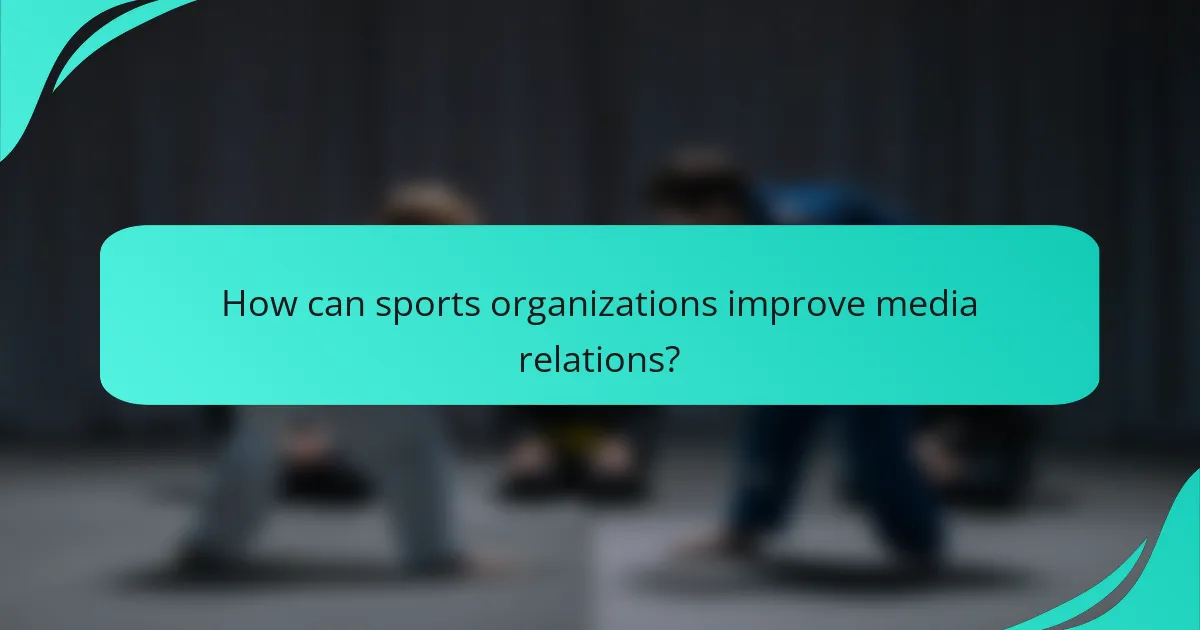Media coverage plays a crucial role in shaping audience perception of sports events by framing narratives and highlighting pivotal moments. This influence not only enhances viewer engagement but also alters public opinion, making it essential to understand the dynamics at play. Factors such as audience demographics and media outlet biases further impact how different sports are portrayed and received, leading to varied audience reactions based on the sport’s popularity and cultural significance.

How does media coverage influence audience perception of sports events?
Media coverage significantly shapes audience perception of sports events by framing narratives, highlighting key moments, and influencing emotional responses. The way events are presented can enhance viewer engagement and alter public opinion, making media a powerful tool in the sports landscape.
Impact of live broadcasts on viewer engagement
Live broadcasts create a sense of immediacy and connection for viewers, enhancing their engagement with the event. The ability to watch games in real-time allows fans to experience the excitement as it unfolds, which can lead to increased emotional investment and loyalty to teams.
Moreover, live commentary and expert analysis during broadcasts can provide context and deepen understanding, making the viewing experience more enriching. Engaging graphics and interactive features, such as instant replays and player statistics, further enhance viewer involvement.
Role of social media in shaping opinions
Social media platforms play a crucial role in shaping audience opinions about sports events by facilitating real-time discussions and sharing of highlights. Fans often turn to platforms like Twitter and Instagram to express their thoughts, share reactions, and engage with others, creating a communal experience.
Additionally, influencers and sports analysts on social media can sway public perception through their commentary and insights. The viral nature of social media content can amplify specific narratives, leading to widespread agreement or dissent among fans.
Analysis of sports journalism trends
Sports journalism has evolved with the rise of digital media, focusing more on storytelling and audience engagement. Traditional reporting is now complemented by multimedia content, including podcasts and video features, which cater to diverse audience preferences.
Trends indicate a shift towards more analytical and opinion-based pieces, often reflecting the sentiments of fans rather than just reporting facts. This can create a more dynamic dialogue between journalists and audiences, but it also raises concerns about bias and the accuracy of information presented.

What are the key factors affecting media coverage of sports events?
Key factors influencing media coverage of sports events include audience demographics, media outlet biases, and the significance of the events themselves. Understanding these elements helps in analyzing how different sports are portrayed and received by the public.
Audience demographics and preferences
Audience demographics, such as age, gender, and location, play a crucial role in shaping media coverage. For instance, younger audiences may prefer coverage of fast-paced sports like basketball or soccer, while older viewers might lean towards traditional sports like golf or tennis.
Media outlets often tailor their coverage to align with the preferences of their target demographics. This can lead to disparities in how different sports are highlighted, with popular sports receiving more airtime and analysis compared to niche sports.
Media outlet bias and framing
Media outlet bias can significantly affect how sports events are covered, with different outlets emphasizing various aspects based on their editorial stance. For example, a network with a strong affiliation to a particular team may provide more favorable coverage of that team while downplaying its rivals.
Framing also plays a critical role; the way a story is presented can influence audience perception. Outlets may focus on dramatic narratives, such as rivalries or controversies, which can overshadow the actual performance of athletes and teams.
Event significance and historical context
The significance of a sports event often dictates the level of media coverage it receives. Major tournaments like the FIFA World Cup or the Olympics attract extensive media attention due to their global impact and historical importance.
Historical context can also enhance the narrative around an event. For example, a championship game between long-standing rivals may be framed as a continuation of a historic rivalry, drawing in viewers who are invested in the backstory. Understanding these factors helps audiences appreciate the depth of coverage surrounding significant sports events.

How do audience reactions vary across different sports?
Audience reactions to sports events differ significantly depending on the type of sport. Factors such as the sport’s popularity, cultural significance, and the nature of the event itself all contribute to how fans engage and respond.
Comparison of reactions in football vs basketball
Football typically elicits intense emotional responses, especially during major tournaments like the FIFA World Cup. Fans often display passionate behaviors such as chanting, singing, and even crying, reflecting the sport’s deep-rooted cultural ties in many countries.
In contrast, basketball fans tend to express their reactions through dynamic interactions, such as cheering and engaging in social media discussions during games. The fast-paced nature of basketball creates a different atmosphere, where immediate reactions are common, especially in close games.
Fan engagement in niche sports
Niche sports, such as curling or ultimate frisbee, often foster a unique sense of community among fans. Engagement in these sports can be more personal, with fans frequently attending local events and forming close-knit groups.
While the audience size may be smaller, the loyalty and enthusiasm of fans in niche sports can rival that of mainstream sports. For example, dedicated followers often participate in grassroots initiatives to promote their sport, enhancing their connection and investment in the community.
Regional differences in sports fandom
Regional variations significantly influence sports fandom and audience reactions. In the United States, for instance, American football dominates, with fans showing high engagement levels during the Super Bowl, often leading to record-breaking viewership.
Conversely, in countries like Brazil, football reigns supreme, with fans celebrating victories through large public gatherings and festivities. Understanding these regional differences is crucial for marketers and organizers aiming to connect with local audiences effectively.

What metrics are used to measure audience perception?
Audience perception of sports events is primarily measured through various metrics that capture public sentiment, engagement, and opinions. These metrics provide insights into how well events resonate with fans and influence their attitudes toward teams and athletes.
Social media sentiment analysis
Social media sentiment analysis involves evaluating public reactions on platforms like Twitter, Facebook, and Instagram to gauge audience feelings about sports events. By analyzing posts, comments, and hashtags, analysts can determine whether the sentiment is positive, negative, or neutral.
Tools like sentiment analysis algorithms can quantify this data, often resulting in percentages that indicate overall public mood. For example, a sports event might see 70% positive sentiment, suggesting strong fan support.
Viewership ratings and engagement statistics
Viewership ratings measure how many people are watching a sports event, typically expressed as a percentage of the target demographic. High ratings indicate strong interest and can influence future programming decisions.
Engagement statistics, such as average watch time and viewer interactions (like comments and shares), provide deeper insights into how engaged the audience is. For instance, a significant increase in engagement during a critical game moment can highlight what captures viewer attention.
Surveys and polls on fan opinions
Surveys and polls are direct methods for collecting fan opinions about sports events. These can be conducted online or through traditional methods, allowing fans to express their views on various aspects, such as event organization, player performance, and overall satisfaction.
Results from these surveys can reveal trends in fan preferences and highlight areas for improvement. For example, if a survey shows that 80% of fans are dissatisfied with the event’s scheduling, organizers can adjust future plans accordingly.

How can sports organizations improve media relations?
Sports organizations can enhance media relations by fostering strong connections with journalists, implementing effective press release strategies, and providing media training for athletes. These approaches help ensure accurate coverage and positive public perception.
Building relationships with journalists
Establishing relationships with journalists is crucial for sports organizations. Regular communication, such as inviting reporters to events or providing exclusive interviews, can create trust and encourage favorable coverage.
Organizations should identify key journalists who cover their sport and engage with them consistently. Personalizing outreach efforts, like sending tailored emails or meeting for coffee, can significantly strengthen these connections.
Effective press release strategies
Crafting effective press releases is essential for conveying important news to the media. A well-structured press release should include a catchy headline, a compelling lead paragraph, and relevant details that answer the who, what, when, where, and why.
Organizations should aim to distribute press releases at optimal times, such as early in the week or just before major events, to maximize visibility. Including multimedia elements like images or videos can also enhance engagement and increase the chances of coverage.
Utilizing media training for athletes
Media training for athletes equips them with the skills to communicate effectively with the press. Training sessions should cover key topics such as message delivery, handling difficult questions, and maintaining a positive image.
Regular practice through mock interviews can help athletes become more comfortable in front of cameras. Organizations should encourage athletes to participate in these sessions, as well-prepared spokespeople can significantly improve media relations and public perception.

What are the emerging trends in sports media coverage?
Emerging trends in sports media coverage include the increasing dominance of digital platforms, enhanced viewer engagement through interactive content, and a shift towards more personalized viewing experiences. These trends reflect changing audience preferences and technological advancements in how sports are consumed.
Rise of streaming platforms
The rise of streaming platforms has transformed sports media coverage by offering viewers more flexibility and access to a wider range of events. Services like ESPN+, DAZN, and Peacock allow fans to watch live games and highlights on-demand, often without the need for traditional cable subscriptions.
These platforms typically provide various subscription models, including monthly or annual fees, which can range from around $5 to $15 per month. This pricing structure makes it easier for fans to choose packages that fit their viewing habits, often including exclusive content that isn’t available on traditional networks.
However, viewers should be aware of potential pitfalls such as regional restrictions and varying quality of streams. It’s advisable to check the availability of specific sports or events in your area before committing to a subscription, as not all platforms cover every league or game.
